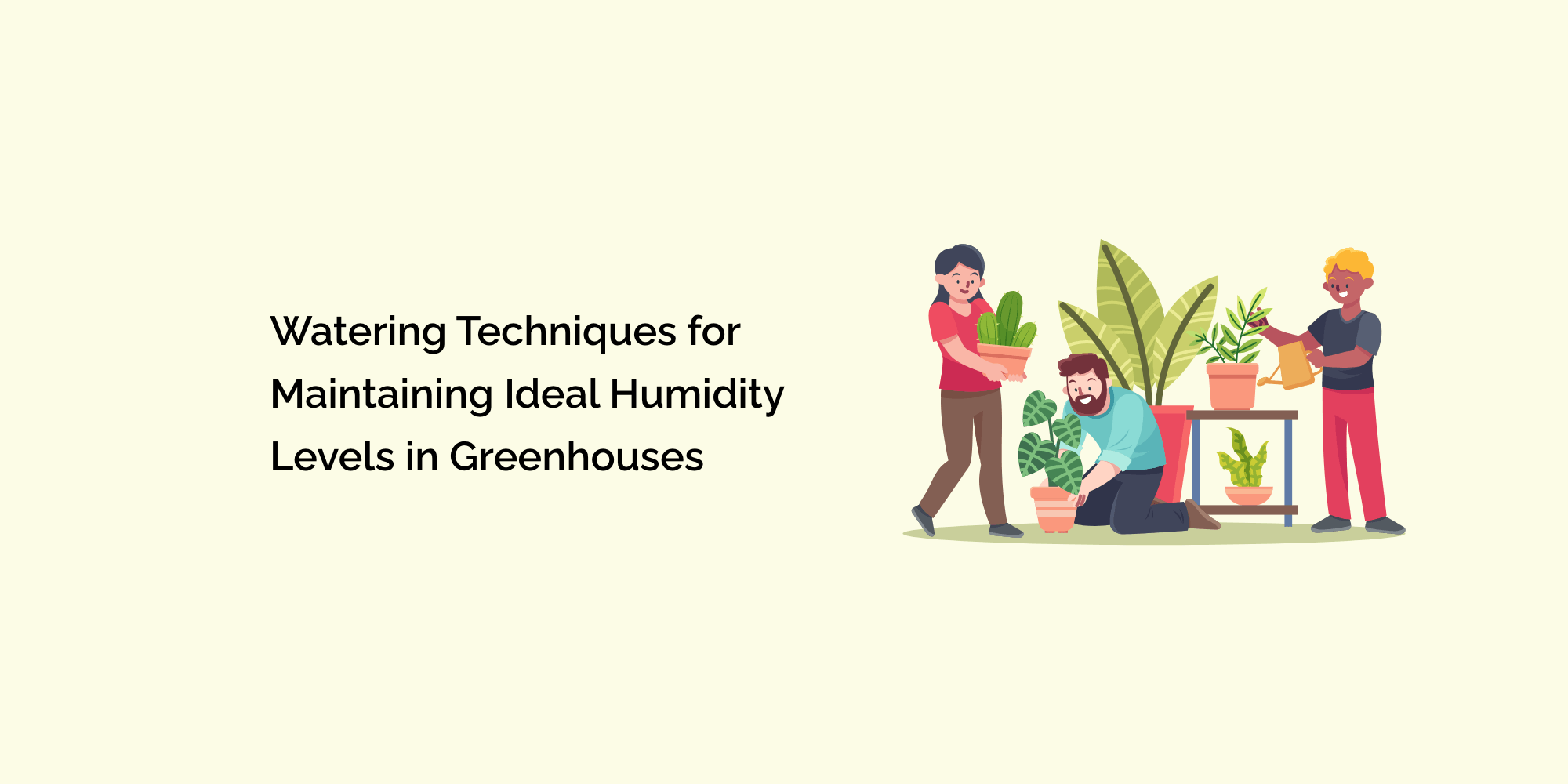Maintaining optimal humidity levels is a crucial aspect of successful greenhouse gardening. Humidity affects plant health, growth, and overall greenhouse conditions.
Watering techniques play a significant role in regulating humidity levels within the greenhouse environment.
In this blog, we'll explore various watering strategies and techniques to help you achieve and maintain the ideal humidity for your greenhouse plants.
The Importance of Humidity in Greenhouses
Before diving into watering techniques, let's understand why humidity is essential for greenhouse plants:
-
Transpiration: Plants release water vapor through small pores (stomata) on their leaves in a process called transpiration. Humidity influences the rate of transpiration.
-
Nutrient Uptake: Humidity affects nutrient uptake by plants. Proper humidity levels ensure that nutrients are effectively transported from the roots to other plant parts.
-
Pest and Disease Management: Maintaining humidity within the optimal range can deter certain pests and diseases that thrive in extremely dry or excessively humid conditions.
-
Temperature Regulation: Humidity helps regulate temperature within the greenhouse by slowing down temperature fluctuations. This creates a more stable and comfortable environment for plants.
Now, let's explore effective watering techniques to control humidity:
1. Overhead Sprinkler Systems
Pros:
- Even distribution of water.
- Mimics natural rainfall.
- Promotes high humidity levels.
Cons:
- Can wet foliage, increasing the risk of fungal diseases.
- May require more water.
Tips:
- Use sprinklers during the cooler parts of the day to minimize leaf wetting.
- Adjust the frequency and duration of sprinkler operation based on weather conditions and plant needs.
2. Drip Irrigation
Pros:
- Precise and efficient water delivery.
- Reduces water wastage.
- Minimizes the risk of leaf wetting.
Cons:
- Initial setup can be more complex and costly.
Tips:
- Place drip emitters strategically to ensure even moisture distribution.
- Use a timer or sensor-based system to automate watering based on humidity and soil moisture levels.
3. Capillary Matting
Pros:
- Provides a constant supply of moisture to plants.
- Prevents overwatering.
- Keeps humidity levels stable.
Cons:
- Limited to certain greenhouse setups.
Tips:
- Ensure the matting material is properly saturated to maintain consistent humidity.
4. Fogging Systems
Pros:
- Creates fine water droplets that quickly evaporate, increasing humidity.
- Ideal for maintaining high humidity without wetting foliage.
Cons:
- May require more energy and maintenance.
Tips:
- Set fogging systems to run during the hottest part of the day to cool the greenhouse while increasing humidity.
5. Bottom Watering (Sub-Irrigation)
Pros:
- Prevents leaf wetting.
- Reduces the risk of fungal diseases.
- Encourages deep root growth.
Cons:
- Requires trays or containers to hold water.
Tips:
- Use trays or containers with capillary matting for efficient bottom watering.
6. Monitoring and Control Systems
Regardless of the watering technique you choose, consider incorporating monitoring and control systems to maintain ideal humidity levels.
These systems can include humidity sensors, automatic vents, and computer-controlled irrigation systems.
They allow you to adjust watering and ventilation based on real-time data, ensuring that humidity remains within the desired range.
Conclusion
Effective watering techniques are essential for maintaining the ideal humidity levels in your greenhouse.
By choosing the right method and incorporating monitoring and control systems, you can create a healthy and thriving environment for your plants. Remember that the specific watering approach may vary based on your greenhouse setup, plant types, and local climate conditions.
Regular observation and adjustment are key to achieving and sustaining optimal humidity levels for successful greenhouse gardening.








